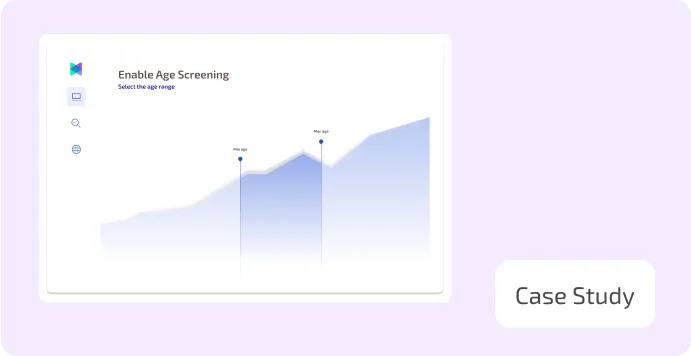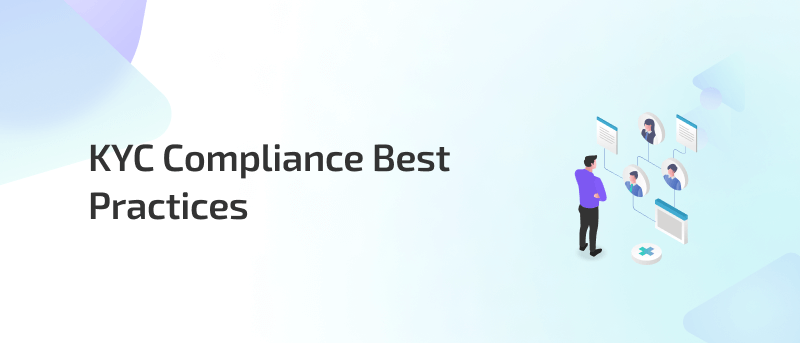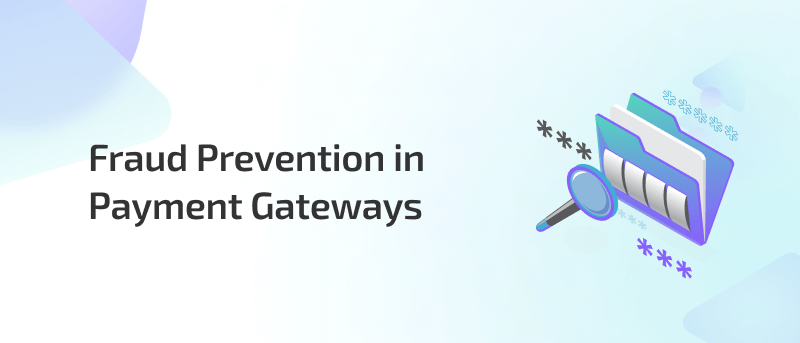.webp)
Published on
July 16, 2025
Risk Management in Banking: Types & Mitigation Strategies
In this story

Accelerate AML Compliance: Meet Regulatory Demands with 80% Less Setup Time
.svg)
.svg)
The banking sector is inherently exposed to various risks, from operational and market risks to reputational damage and financial losses due to fraud. The evolution of risk management in the banking sector has shifted from reactive strategies to predictive analytics, enabling institutions to anticipate and mitigate financial threats before they materialize.
This article will explore risk management in financial institutions, providing actionable insights and best practices for improving risk management banking processes.
What is Risk Management in Banking?
At its core, risk management in banking refers to the processes, strategies, and tools used by financial institutions to identify, assess, and mitigate various risks that may threaten the stability, operations, and regulatory compliance of a bank.
This comprehensive approach helps financial institutions maintain business continuity, protect assets, and ensure that operations are conducted according to regulatory standards.
Risk management in the banking industry includes various processes that banks use to evaluate their vulnerabilities, develop control measures, and respond to unexpected risks. These bank risk management processes are essential for reducing the likelihood of financial losses, regulatory breaches, and damage to a bank's reputation.
For banks in the Middle East, risk management in financial services is also closely linked to compliance with region-specific regulatory requirements such as anti-money laundering (AML) regulations, sanctions screening, and fraud prevention measures.
Why Effective Risk Management is Essential for Banks
Effective risk management by banks is essential to avoid losses from credit defaults, fraud, or market changes.
Banks face various risks and managing them properly is essential to protect the institution. Here’s why risk management by banks is so important:
1. Protecting Financial Stability: Without proper risk management banking, these risks can quickly undermine a bank’s financial health. Managing risks effectively ensures that the bank remains stable and can handle difficult economic conditions.
2. Maintaining Reputation and Customer Trust: Poor bank risk management can lead to problems like fraud or security breaches, which damage the bank’s reputation.
3. Ensuring Regulatory Compliance: Banks must follow strict regulations to operate legally. Effective risk management helps banks meet these regulations, such as maintaining sufficient capital reserves and complying with anti-money laundering (AML) laws. Staying compliant with risk management in the banking industry avoids legal penalties, protects the bank’s reputation, and ensures smooth operation.
4. Supporting Strategic Decisions: Risk management helps banks make informed decisions when entering new markets, offering new products, or investing in new technologies. By understanding the risks involved, banks can make smarter decisions that align with their long-term goals, balancing potential rewards with possible downsides.
5. Efficient Capital Allocation: Proper risk management helps banks allocate their capital wisely. By assessing the risks in their investments, banks can decide where to invest more and where to reduce exposure.
Comply quickly with local/global regulations with 80% less setup time
.svg)
.svg)
8 Types of Risk Management in Banking
As customer expectations evolve, risk management in financial services must balance innovation with rigorous controls to protect both operational integrity and consumer trust.
There are several types of risk management in banking, each addressing a unique aspect of potential threats faced by financial institutions. Here are the key types of risk management in banking:
1. Credit Risk Management
Credit risk involves the potential that a borrower may fail to repay a loan. To manage this risk, banks assess the creditworthiness of borrowers using tools like credit scoring. Banks also set limits on credit exposure to ensure they don’t overextend themselves, which could lead to significant financial losses from defaults.
2. Market Risk Management
Market risk is the risk of financial loss due to changes in market variables like interest rates, exchange rates, or commodity prices. Banks manage market risk through hedging, diversification, and other financial strategies to protect their investments and limit exposure to market volatility.
3. Liquidity Risk Management
Liquidity risk occurs when a bank doesn’t have enough cash or liquid assets to meet its short-term financial obligations. Effective liquidity management involves maintaining a reserve of liquid assets and carefully managing cash flow. Regulatory frameworks like Basel III require banks to have adequate liquidity buffers.
4. Operational Risk Management
Operational risk arises from failures in internal systems, processes, or human error, as well as from external events like cyberattacks. Banks manage operational risk by implementing strong internal controls, cybersecurity measures, and employee training to ensure smooth operations.
5. Compliance Risk Management
Compliance risk is the risk of failing to adhere to legal and regulatory requirements, which can result in penalties and reputational damage.
Banks manage compliance risk by staying up to date with changing regulations, including anti-money laundering (AML) and data protection laws, and ensuring their practices align with legal standards.
6. Cybersecurity Risk Management
Given the growing reliance on technology, cybersecurity risk is increasingly critical for banks. This type of risk refers to threats like data breaches or cyberattacks that could harm bank systems and customer information.
Banks mitigate cybersecurity risk by adopting strong security measures, encryption protocols, and constant monitoring to safeguard against cyber threats.
7. Reputation Risk Management
Reputation risk is the potential harm to a bank’s public image due to negative events, such as poor customer service or regulatory breaches.
Banks manage this risk by being transparent in their operations, addressing customer complaints quickly, and maintaining high ethical standards.
8. Strategic Risk Management
Strategic risk arises from a bank’s decisions about its business direction, such as entering new markets or launching new products.
Banks manage strategic risk by conducting thorough research, analyzing potential risks, and aligning business strategies with long-term goals.
Key Elements of Risk Management Frameworks for Banks
A bank's ability to navigate risks effectively is central to its success and longevity. A well-designed risk management framework acts as the foundation for addressing the dynamic challenges banks face.
1. Comprehensive Risk Identification Process
Risk management begins with identifying the various risks the bank may encounter. This includes not just traditional financial risks like credit and market risks but also operational, cybersecurity, and reputational risks.
A proactive identification process ensures that the bank has a clear understanding of potential threats across all areas, setting the stage for targeted responses.
2. Quantifying and Prioritizing Risks
Once risks are identified, they need to be assessed in terms of their potential impact and likelihood. This step allows banks to understand which risks pose the greatest threat to their stability.
Risk quantification techniques like value-at-risk (VaR), stress testing, and scenario analysis help determine the magnitude of each risk, enabling the bank to prioritize mitigation strategies based on the highest-impact areas.
3. Implementing Preventive and Corrective Measures
Risk mitigation is not about completely eliminating risks but rather managing them effectively. Banks implement a mix of preventive and corrective actions tailored to specific risks.
For example, to handle credit risk, banks may establish risk-based pricing, use credit scoring systems, and introduce collateral management. This ensures that when risks materialize, they cause minimal damage to the bank’s operations and finances.
Read more: AML Risks in Correspondent Banking
4. Strong Governance and Risk Ownership
A sound governance structure is essential to ensure that risk management practices are consistently applied. This includes defining roles and responsibilities for risk owners across various departments and establishing risk committees at senior management levels.
5. Ongoing Monitoring and Adaptation
The dynamic nature of the financial industry means risks can change quickly. Continuous monitoring tools, such as real-time risk dashboards and automated reporting systems, help the bank stay ahead of emerging risks.
Regular audits and stress tests are essential to ensure that the framework remains effective, and that timely adjustments can be made when necessary to address new risks or evolving trends.
6. Staying Compliant with Regulations
Regulatory compliance is a cornerstone of any risk management framework. Compliance risks arise when a bank fails to meet legal or regulatory standards.
A strong framework ensures the bank complies with Basel III, anti-money laundering (AML) requirements, data protection laws, and other relevant regulations.
8. Continuous Review and Refinement
The financial industry is constantly evolving, and so too should the bank’s risk management practices. A robust framework must include mechanisms for ongoing evaluation and refinement.
8 Best Practices for Risk Management in Banks
To successfully manage risks, banks must adopt comprehensive practices for risk management in banks. Some of the top best practices include:
1. Embed Risk Management into the Bank’s DNA: Risk management should be integrated into every aspect of the bank's operations, from top leadership to day-to-day processes.
2. Use Data Analytics for Risk Monitoring: Leveraging advanced data analytics tools enables banks to monitor risks in real-time, identify emerging threats quickly, and make data-driven decisions for better risk mitigation.
3. Strengthen Cyber Resilience Beyond Cybersecurity: Building cyber resilience involves not only protecting against cyberattacks but also ensuring that the bank can recover quickly and continue operations if an attack occurs, emphasizing preparedness and response.
4. Adopt a Scenario-Based Risk Management Approach: Scenario-based risk management allows banks to model potential future risks under different scenarios, helping to prepare for uncertainties and develop strategies to minimize impacts when adverse events occur.
5. Integrate Environmental, Social, and Governance (ESG) Risks: ESG risks are becoming increasingly significant, and banks should incorporate environmental, social, and governance factors into their risk management processes to comply with regulations and meet stakeholder expectations.
6. Establish Clear Governance and Risk Ownership: Clear roles and responsibilities should be defined at all levels of the bank to ensure accountability for managing risk.
7. Implement Robust Risk Identification Methods: Banks should use a variety of tools and techniques, such as stress testing, and scenario analysis, to identify both existing and emerging risks across the organization.
8. Ensure Compliance with Regulatory Standards: Staying up-to-date with regulatory requirements helps banks manage legal risks, ensure transparent operations, and foster trust with customers and regulators.
Challenges in Risk Management for Banks
Despite their best efforts, risk management for banks is not without its challenges. Some of the major obstacles in risk management for financial institutions include:
- Inconsistent or fragmented data across systems.
- The risk management of banks against hacking and fraud.
- Keeping up with constantly changing regulations, especially for cross-border banks.
Risk Management in Banking with FOCAL
As digital transformation accelerates, risk management in the banking sector must continuously adapt to emerging technologies, customer behaviors, and global economic uncertainties.
FOCAL is an AI-powered solution that helps banks manage risks and stay compliant with regulations more effectively. The platform offers tools for detecting and preventing fraud, monitoring transactions, and ensuring adherence to AML rules.
FOCAL also allows banks to assess customer risk using a customizable system that aligns with their specific needs. It streamlines compliance management, helping banks stay on top of changing regulations with ease. Also, FOCAL integrates smoothly into existing systems, reducing setup time and the need for ongoing maintenance.
To see how FOCAL can benefit your organization, feel free to schedule a demo today.
Streamline Compliance: Achieve 80% Faster Setup for Fraud Prevention
.svg)
.svg)

How Aseel reduced onboarding time by more than 87% using FOCAL
Learn how FOCAL empowered Aseel to achieve new milestones.
.svg)
.svg)
Mastering Fraud Prevention: A Comprehensive Guide for KSA and MENA Businesses
51% of organizations fell victim to fraud in the last two years, don't be caught off guard, act proactively.
.svg)
.svg)
Featured blog posts
.svg)
AI-Driven Precision in Fraud Risk and AML Compliance
.svg)
.svg)

.svg)
.png)






.webp)




.svg)

_FastestImplementation_Small-Business_GoLiveTime.png)

_HighPerformer_Small-Business_HighPerformer.png)
_Leader_Leader.png)



%20(1).webp)